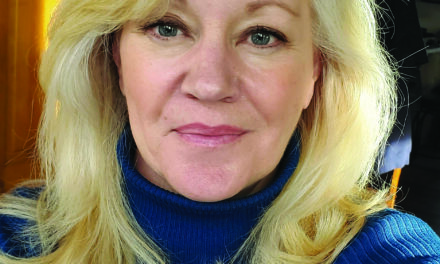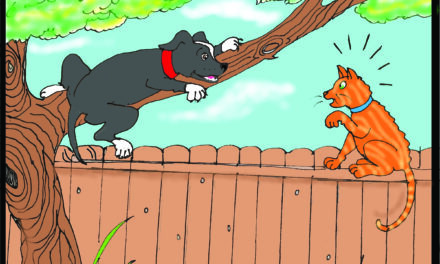
With Memorial Day coming up on the 27th, I’d like to point out how important dogs are to every branch of military service. Even if a specific canine doesn’t have an official role in the military (although some do), one home video of a human reuniting with his or her dog after returning from a long deployment is all it takes to understand the pivotal role dogs can play in the wellbeing of every member of the military—those who gave their lives and those still serving.
You’ve seen the videos: a dog is waiting on the front porch, not realizing who is getting out of the car in the driveway. They have no idea it’s the very person who raised them from a pup; who snuggled with them on the couch; who shared their snacks, read to them on snowy days, and took them on summertime adventures in the woods. They’ve been well cared-for, but still they don’t understand where their favorite person went and why it’s taking so long for them to return. The car door opens, and their human steps out dressed in fatigues, duffel in hand. The dog doesn’t recognize them at first in the unfamiliar garb. They face the porch, drop the duffel, and crouch down, arms outstretched in greeting. And then that familiar voice calls to them and that is the final piece. The camera angle perfectly captures the moment the dog clues in and how vigorously its tail wags, moving its entire butt in an adorable wiggle. They can hardly believe it. Their beloved human is home at last and they cannot wait to get at them. They run across the yard and leap into their arms, tumbling them over onto the ground where they laugh and roll in the grass in a big, sloppy love-fest. There is much face licking and joyful wiggling on screen and much wiping at tears from anyone watching. I could watch and watch, despite the inevitable sobbing.
“I was very pleased to learn that there is a program out there that pairs service dogs with military vets.”
Here’s the deal: We humans have whole other lives besides what we do at home, but our dogs center their whole lives around us. There is not a time I arrive after a long day’s work when I don’t see Daisy’s face in the upstairs window, watching for me. Her head bobs as she prances from paw-to-paw and her ears lift in eager anticipation. When I make eye contact and call out to her, she leaps from her spot. I can hear her land as she bounds off the ottoman on her way to the door. If her dog door is open, she bursts through and waits at the top of the stairs, prancing eagerly. When I turn the corner and come into view, I say, “Well, go on,” and she ducks back through the door, running a happy lap before returning. We have this routine because, quite simply, I don’t want to be knocked down the stairs by her exuberant greeting. This gives me a chance to free my hands before saying hello to her. Unfortunately, before we adopted our Daisy, someone did not deter her bad habit of jumping up. I’ve found that training works best as a young puppy. But faced with this hard-to-break habit, we’ve landed on a compromise. One jump that I anticipate where she rests her paws up on my shoulders and then it’s down to the ground with encouragement and petting and cooing. Little dogs get away with this behavior because it’s hard to be bowled over by a 12-pound paws-up greeting, especially if their paws only reach their human’s knees. Daisy is 65 pounds and eye-to-eye when she’s in paws-up mode. Despite this, do I love her over-the-top enthusiasm at my return each day? How could I not?
Of course, Memorial Day is about remembering those fallen soldiers, who gave their lives for country and freedom, for which we should all be grateful. But what about those veterans who survived, but are in a lot of emotional and/or physical need of support? PTSD (Post Traumatic Stress Disorder) and TBI (Traumatic Brain Injury) are two common conditions that require support, but it can also be a situation of physical impairment, depression or anxiety. For many reasons, suicide rates are high among military veterans. I was very pleased to learn that there is a program out there that pairs service dogs with military vets. The one I read about is called K9s for Warriors. The program is for veterans of all military branches, and it supplies these service dogs to those in need free of charge. Different dogs are better suited for different types of needs and this program sorts them out. The really great part is that this pairing can save two lives in one swoop: the veteran and the dog. You see, K9s for Warriors sources their dogs from shelters, many that would otherwise be euthanized. You may wonder, how can this possibly work? I mean, plucking dogs from shelters isn’t exactly a concise science. How do you discern the qualities of a breed when the breed(s) are unknown? K9s for Warriors has figured that out too. If a rescued dog is proven to be unsuitable for service—meaning they failed out of service dog training—they either get thoughtfully rehomed or become Station Dogs. Station Dogs are dogs that help reduce anxiety in high-stress environments, such as fire and police stations and dispatch offices. Maybe the Dalmatian fire house mascot has merit beyond being helpful at the scene of a fire.
On the K9s for Warriors website
(k9sforwarriors.org) you can learn more about what they do and how you or a veteran you know could benefit from this lifesaving program. You can also read what people who have participated have to say about the program, such as Julia, a 2019 graduate who gives insight with her testament. “K9s for Warriors has pushed me beyond what I thought was possible. With Liberty by my side, I am starting to see who I was before this disability consumed me.”
For this amazing dog-centric program, and for many, many other reasons, I am reminded why dogs were put on this earth: to be our companions, helpers and beloved family members. And I am reminded why I am grateful to have this forum to write about them. It is all for the love of dogs.



